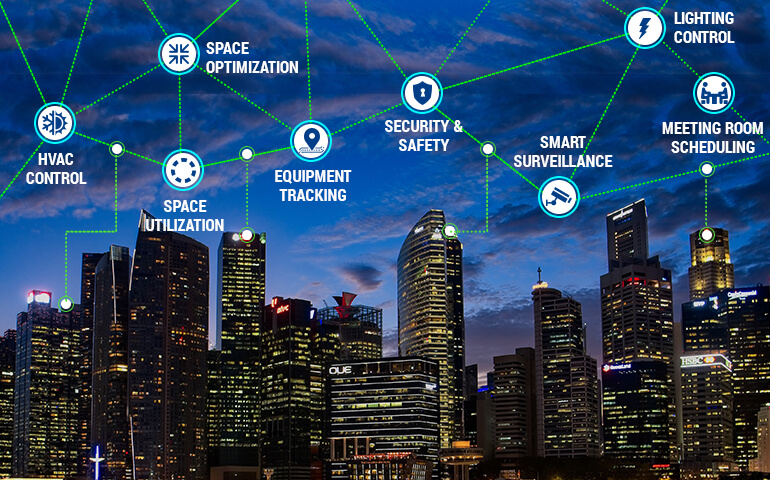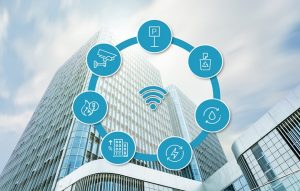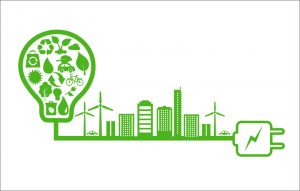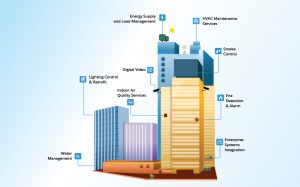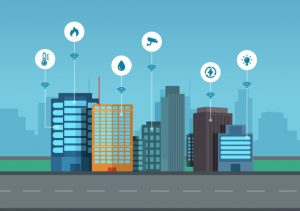Maintenance of a multifaceted commercial building is a complex and challenging job. A huge amount of data is collected and recorded on a daily basis. Since monitoring of that data is not easy, facility managers face a lot of issues with building maintenance. Hence, assuring the accuracy of the monitored and recorded data becomes a big task.
Any business that is being operated inside a commercial building needs to collect, store and analyze data for the advancement of the business. Usage of the Internet of Things (IoT) not only gives a competitive advantage but it takes commercial building management one step further. This even helps in maximizing occupancy and increasing occupant’s comfort.
The Internet of things (IoT) has created a gateway that would help in managing and controlling complex buildings. These gateways are projected to exceed 64 million units in 2021 – ABI Research.
We often come across the phrases like smart building management or smart facility monitoring solutions. How do these solutions help and make things easier for us?
Let’s take a look at the areas and ways wherein IoT can help:
- Space utilization and optimization
- Building maintenance and IoT
- Pre-program heating & cooling
- Security and Safety
- Control building lighting
- Control plug load
source: http://www.clarusps.com
Space utilization and optimization
With the help of various types of sensors, beacons, and RFID tags, IoT can help in managing and utilizing the spaces appropriately. This is because it can help to monitor the number of people occupying space at a given point in time.
Once we receive such organized and sorted data, we can analyze it and can use it in the future to use those spaces accordingly.
Such kind of monitoring can help to have better planning in the nearby future, so that; usage of a building becomes convenient for users. For example: If in a commercial building someone books a meeting room for a discussion and later the meeting gets canceled, then the room can show itself free and it can be available for others to book.
Security and safety
Generally, commercial buildings are in constant use. Where it is very important to maintain the safety and security of people using the facility, it becomes difficult for a human to monitor each and everything and stay alert to notice something unusual or say a threat. Access control is the most implemented medium in this regard. It was previously not connected to the Internet. But its connection to the Internet now has opened up new prospects which include:
- facial recognition for enhanced security
- detecting entry of an intruder in the facility
- to realize the threat and vacate the building in case of emergency situations or natural disasters
Building maintenance and IoT
Maintenance of building equipment like HVAC systems, plumbing, electrical, elevators, escalators and building system configuration is made easy with the help of the Internet of Things. Since the breakdown of such equipment can cause hindrances, smooth running of the equipment is necessary for the actual functioning of the facility.
Predictive maintenance capabilities of IoT can monitor patterns and detect an abnormality. As a result, it can prompt the building maintenance automatically to take preventive measures and avoid the failure from taking place. This reduces expenditure on preventive and unplanned maintenance.
Control building lighting
Even if the lights are not in use in complex buildings, usually they are left on and this results in a trench of energy. At times people even forget to turn off the lights before leaving the office premises. With the use of IoT, the lights can be enabled with a feature to communicate with machines using the network. As a result, one can set timers or pre-program the on and off timings for lights, and can even turn them off remotely.
To incorporate such systems, IoT is supported by data analytics and machine learning. The connected devices and energy management systems in such commercial buildings produce data that are essential for adjusting lights when offices or spaces are empty. Eventually, machine learning algorithms analyze the immense amount of data that can be used for taking further necessary actions.
Pre-program heating and cooling
A lot of energy is wasted on a daily basis by heating or cooling a building when nobody is in it. A small save from such waste of energy can be a big achievement when seen collectively. In order to have such a benefit, we must connect the HVAC system to a network that enables us to pre-program the heating and cooling systems to go on and off. We can even adjust the temperature as and when required.
Since the smart building solution is embraced with the predictive aspect of machine learning and data visualization, the data produced by the energy management systems and connected devices can help in reducing heat or cooling in underutilized zones. With analyses of such data, the devices can send alerts and smartly advise admin to take smart actions itself.
Control plug load
It is important to control the plug load in order to stop the energy usage. If they remain plugged in, they continue to use energy. But, it is not easy to unplug all the appliances in a building on a daily basis.
With the help of a smart building solution, the electrical devices can be connected with computers, which can cut off plug load when these devices are not used by anyone.
Application of IoT can automate the analysis of data which would be helpful in taking necessary actions. This will help facility managers to focus on fixing problems rather than finding them, saving time and making the management of the premises more convenient. Taking advantage of IoT and AI will cut off maintenance costs and turn the buildings more efficient.
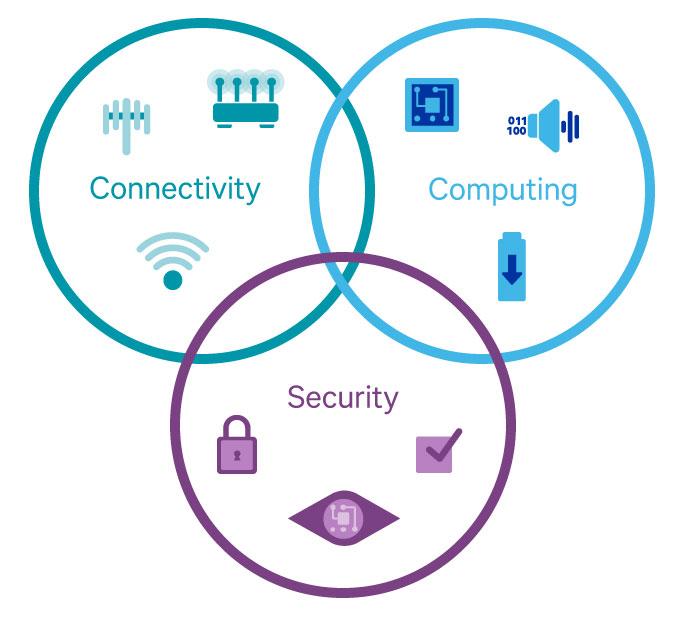
source: https://www.qualcomm.com
Who should consider installing a Smart Building solution?
The Smart Building solution is useful for organizations that have huge portfolios or have a large consumption of energy in operating their businesses. Few of them would be as follows:
- Commercial buildings
- Universities and school campuses
- Hospital buildings
- Manufacturing plants
- Logistics facilities
- Retail stores
- Hospitality industry
- Government facilities
- Public infrastructure facilities


